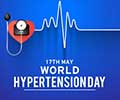Eligibility for Medicaid
Who is Eligible for Medicaid?
Each state sets its own Medicaid eligibility guidelines. The program is basically for people with low incomes and resources, but eligibility also depends on meeting other requirements based on age, pregnancy status, disability status, other assets, and citizenship.
To receive federal matching funds, all States must provide Medicaid coverage for individuals who fall under certain categories of need. States are required to provide Medicaid coverage for most individuals who receive federally assisted income maintenance payments, as well as for related groups not receiving cash payments. Other groups that the federal government considers "categorically needy" and who must be eligible for Medicaid include:
- States are required to provide Medicaid to individuals who meet the requirements of the Aid to Families with Dependent Children (AFDC) program that were in effect in their state as of July 16, 1996.
- Individuals who meet the requirements for the guidelines that were in effect in their state on July 16, 1996
- Children under age 6 whose family income is at or below 133% of the Federal Poverty Level (FPL)
- Infants born to Medicaid-eligible pregnant women. Medicaid eligibility must continue throughout the first year of life so long as the infant remains in the mother's household and she remains eligible, or would be eligible if she were still pregnant
- Supplemental Security Income (SSI) recipients
- Recipients of adoption assistance and foster care under Title IV-E of the Social Security Act
- Special protected groups such as individuals who lose cash assistance due to earnings from work or from increased Social Security benefits
- All children born after September 30, 1983 with incomes up to 100 percent FPL: This requirement will result in the mandatory coverage of all children below 100 percent FPL under age 19 by the year 2003.
- Certain Medicare beneficiaries.
States may also choose to provide Medicaid coverage to other similar groups that share some characteristics with the ones stated above but are more broadly defined. These include:
- Infants up to age 1 and pregnant women not covered under the mandatory rules whose family income is below 185% of the Federal Poverty Level (FPL)
- Children under age 21 who meet income and resources requirements for AFDC, but who otherwise are not eligible for AFDC
- Low-income institutionalized individuals
- Certain aged, blind, or disabled adults with incomes below the FPL
- Certain working-and-disabled persons with family income less than 250 percent of the FPL
- Some individuals infected with tuberculosis
- Certain uninsured or low-income women who are screened for breast or cervical cancer
- Certain "medically needy" persons, which allow States to extend Medicaid eligibility to persons who would be eligible for Medicaid under one of the mandatory or optional groups, except that their income and/or resources are above the eligibility level set by their State.
Medicaid does not provide medical assistance for all poor persons. In fact, it is estimated that about 60% of America's poor are not covered by the program.







